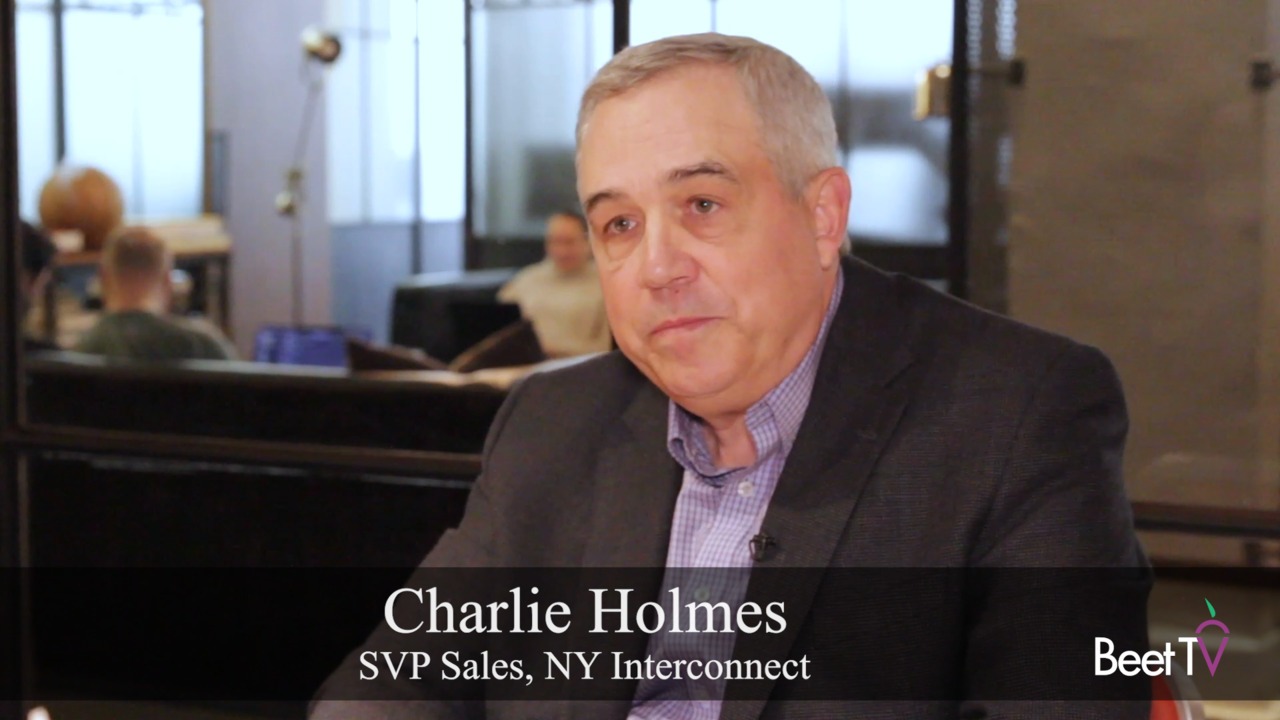
In an undulating business environment, “agility” and “flexibility” have become key words for media buyers who are becoming used to digitally-empowered trading tactics.
That poses a challenge to TV networks that have traditionally secured a large part of their year’s ad spend in May’s annual upfront season.
In this video interview with Beet.TV, Charlie Holmes, SVP Sales at NY Interconnect, explains why things are changing.
The evolution of TV viewing
Holmes explains that the upfronts are a “legacy way of forging partnerships with different networks”, and the world has changed with the introduction of NewFronts, OutFronts, and local opportunities.
“What really ends up happening is you have to be able to shift on the fly”, says Holmes.
NY Interconnect aims to help advertisers be nimble and take advantage of opportunities on a close-end basis.
With all the #content available, getting viewers to discover new #programs can often be challenging for marketers. In @MediaVillageCom's latest article, our #Digital Sales Manager discusses how programmers cut through the noise to find their ideal audience https://t.co/OfHGHgCGnd
— NewYorkInterconnect (@NYInterconnect) January 18, 2023
TV to tomorrow
Even as “legacy” TV faces challenges, however, it is also re-inventing itself.
For example, streaming TV advertising often offers the ability to buy ads with guaranteed outcomes, like consequential website visits or even purchases.
“TV has evolved into a full funnel marketing vehicle”, says Holmes.
The key factors driving this evolution are the ability for marketers to establish brand identity, deliver a message to the right audience, and ultimately target the consumers who will make the sale.
NYI, the JV
New York Interconnect (NYI) is a JV of Altice USA, Charter Communications and Comcast.
It integrates multiple TV content platforms under one umbrella. It aims to make 66 million screens in the New York market buyable by advertisers via the JV partners’ services.
That happens using NYI’s Audience One, a platform for enabling the media buys – and, specifically, the TV+ component. Audience One boasts targeting for more than 22 million consumers, through a single platform.
Local TV news is still a powerful way to reach a targeted and engaged audience — lover half of Americans watch local news on television daily. Find out why local news remains an essential buy: https://t.co/OPenhb6yV8
By Michael Felicetti,VP, News at @NYInterconnect pic.twitter.com/pb8WsbM5Lr— Advertising Week (@advertisingweek) March 13, 2023
A New York media minute
New York is a microcosm of the country, with a rich diversity both socially, economically and politically. Holmes says that national advertisers should pay attention to this market because “when you buy a national execution, you’re really undervaluing the New York market”.
By adding reach and frequency through the New York market, NY Interconnect says it can help brands bridge the gap and fill in the shortfall from a network execution.
Holmes shares examples of a national TV manufacturer and a sports apparel brand that have seen the benefits of adding New York into their marketing mix.
“New York is number one in TV sales, but this manufacturer under-indexed in this market by 35% in the number one market for TVs,” he says.
“What ends up happening is, by adding New York into the mix, we can help close that.”
You’re watching “The TV Upfronts in Transition,” a Beet.TV Leadership Series presented by AudienceXpress, a Comcast Company. For more videos from this series, please visit this page.